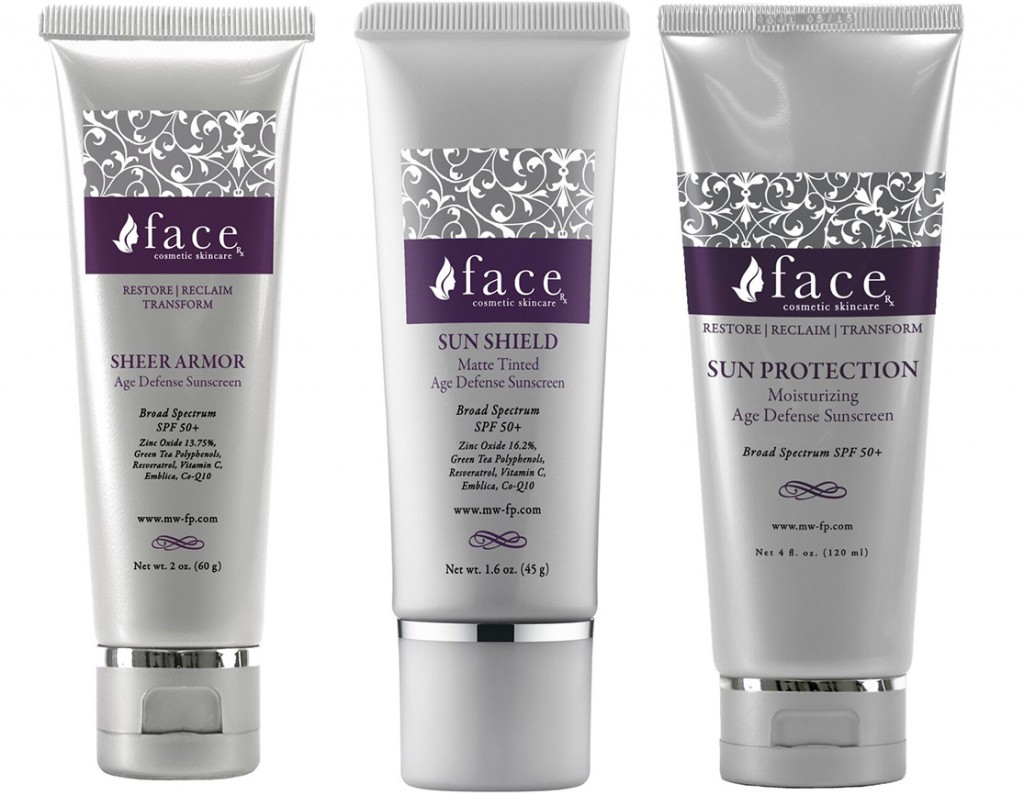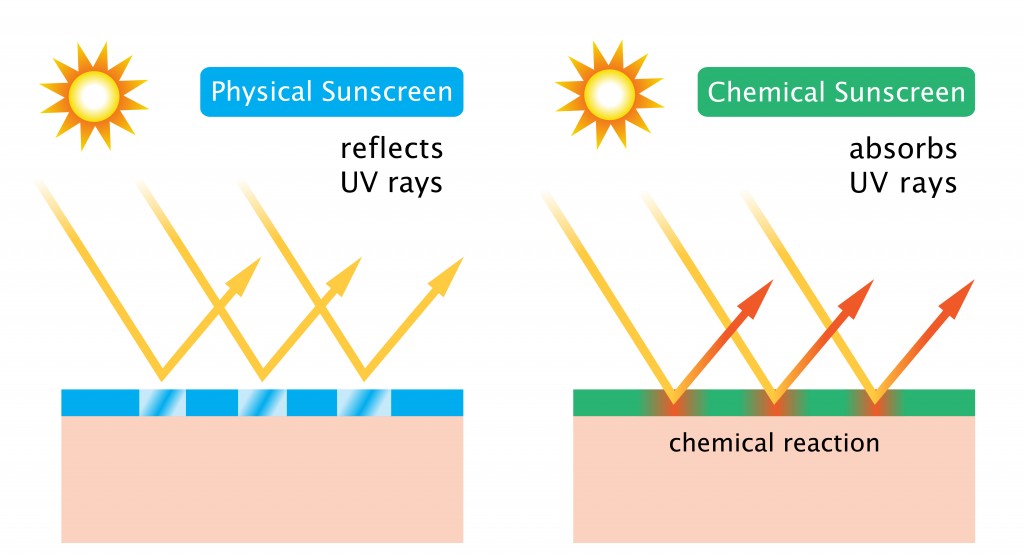Shine a light on what you need to know to stay protected!
At this point in our lives, many of us know that we need to wear a sunscreen while outdoors to protect our skin from sunburn and premature aging of our skin…WRINKLES! It’s now common knowledge that the sun alone causes up to 90% of visible aging on our skin, not to mention putting us at risk for skin cancer. But, if you have walked down the aisles of any drugstore recently, you may have noticed that the sun care industry has literally exploded with options. From gels, to creams, to tints and sprays – there is no lack of options. And now, with recent bans of some sunscreens in states like Hawaii (because of damage to coral beds), a whole new controversy has come to light in the sun protection world – Chemical vs. Physical Sunscreens. Feeling confused and overwhelmed about which options are right for you and your skin? Let’s shine some light on what you need to know to make an informed choice!
While some of us dutifully apply our sunscreen everyday come rain or shine, others of us are more in the habit of slapping some on only while we are on vacation. The American Cancer Society wants you occasional users to listen up! Their research estimates that in 2018 there will be about 91,270 new cases of melanoma diagnosed and over 9,000 deaths from the disease. What does that mean for you? You need to find a sun protection option that works for you, your lifestyle, and your skin type!
So, what makes sunscreens different from one another? Besides their vehicle of delivery (gel, cream, lotion, spray, etc.), sunscreen is generally broken down into two distinct categories; Chemical or Physical. In layman’s terms – absorbent versus reflective. Let’s dig deeper!
Chemical Sunscreens
Like the name suggests, chemical sunscreens protect our skin via chemicals and their reactions with sun. When we’re wearing a chemical sunscreen and we come into contact with sunlight, the chemicals absorb the UV rays and transfer them to heat (and infrared) that dissipates off our skin’s surface. Common ingredients you’ll find on the label of a chemical sunscreens are anything that ends in “benzone,” like Avobenzone and other chemicals like Octinoxate and Octylcrylen.
Because of the heat these sunscreens can trap against the surface of the skin, chemical sunscreens are NOT the ideal options for sensitive skin types or those of us who suffer from conditions like rosacea. The chemicals in these sunscreens can also be incredibly destructive to coral beds in the ocean. Think about it… you’re on vacation and apply your sunscreen right before you go snorkeling, right? Turns out, all of these chemicals in the water are having a large enough impact on ocean health that many states and countries are bringing forth legislation to ban them!
Physical Sunscreens
One of the biggest complaints that some people have about wearing sunscreen is that they get a ghostly white hue to the skin once they apply. If this is the case, they are most likely applying a physical sunscreen. Unlike their chemical sisters who absorb the sun’s rays, physical sunscreens reflect light. They most always contain a more natural array of ingredients and always contain zinc and titanium oxide, the main culprit that will give you that white hue in certain formulations.
Physical sunscreens tend to be a much better option for children and those with sensitive skin, as they reflect heat and have more natural ingredients that are skin friendly. Many formulations now come in tints that omit the concern of the dreaded white hue!
Alright…so which one is better for me?
The short answer is that it depends on you and your lifestyle! Visit any store and you’ll see that chemical sunscreens are much easier to find because the chemical ingredients are cheaper to manufacture and formulate. These sunscreens may offer more versatility in that different chemical combinations are used to filter out more UVA/UVB rays, but there is a tradeoff. More chemicals mean more of a chance for skin irritation.
Physical sunscreens, outside of straight zinc, are most often found in your physician’s office, as they are the gold standard for anyone recovering from a cosmetic procedure like laser resurfacing, after which you do NOT want heat on the skin. The formulations of these sunscreens have come a long, long way from the days of the blue zinc on surfer’s noses. Most have very sophisticated mineral makeup tints to them that have millions of consumers ditching their makeup foundation for a well formulated tinted physical sunscreen. These are great options for those with busy lifestyles who want to still be protected and look “put together” as they race out the door!
What matters most when it comes to sun care is that you’re using it, and using it regularly! Look for products that ensure broad spectrum protection from both UVA and UVB rays, are at least an SPF 30, and are approved by the Skin Cancer Foundation. Meeting with a Licensed Esthetician who carries many options of chemical and physician sunscreens will ensure that you get a perfect match for you and your skin!

Ready to step up your protection this Summer? Schedule a sunscreen consultation with a Face Cosmetic Licensed Esthetician to sample several options and find the perfect fit for You! Call (651) 632-9700 to schedule!

